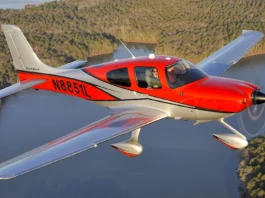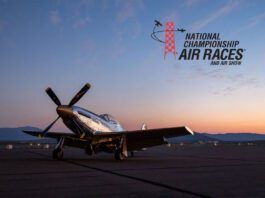Briefing: March 2015
Diamond Aircrafts single-engine turboprop prototype completed its maiden flight in January, in Austria. The DA50-JP7 seats seven and is powered by a fuel-efficient Ukrainian-built 465 hp AI-450S engine. Diamond plans to also offer a Tundra version of the aircraft, featuring beefed-up wheels and landing gear. Certification is expected in the second half of 2016. Also in January, Nextant Aerospace announced the first test flight of its remanufactured G90XT design. The project, which launched about a year ago, matches a refurbished King Air C90A with the new GE H75 engine, a Garmin G1000 cockpit, electronic engine controls, dual-zone air conditioning, and many more upgrades. Certification and first delivery are expected in the second quarter of this year.
Briefing: April 2010
The AOPA Air Safety Foundations annual Nall Report found an increase in accidents involving amateur-built aircraft. The statistics from 2008 showed the highest rate of fatal accidents and fatalities in 10 years. The 27-percent lethality rate in these accidents was 10 full percentage points higher than that for accidents in type-certificated airplanes, according to the report.
Briefing: February 2015
Solar Impulse, the one-of-a-kind solar-powered aircraft designed to fly around the world, is now in Dubai, where it will launch in March. The aircraft was built and tested in Switzerland. It was then disassembled and flown to Dubai aboard a cargo airplane. Andr Borschberg and Bertrand Piccard, who have led the effort, said they are confident in the aircrafts capability and their own training, and they will take turns as pilot. The expedition is expected to take 25 days of flying, and will be completed in stages over four or five months. Some legs above the Atlantic and Pacific will require five to six days of nonstop solo flight. The aircrafts wings measure about 236 feet across, and carry more than 17,000 solar cells.
Briefing: March 2010
In January, a database update for some Bendix/King KLN and KLX products rendered them unsafe for use under IFR. Jeppesen apparently delivered some bad data to Bendix/King that contained incorrect dynamic magnetic variations for all terminal and en route waypoint records. Bendix/King quickly posted a corrected database and got the word out to customers through about every channel imaginable. Still, its a sobering thought how dependent weve become on data that has a potential, however remote, of being corrupt. As far as we know, no in-flight incidents occurred as a result of the problem.
Briefing: January 2015
The loss of SpaceShipTwo during a test flight in November wont shut down Virgin Galactics space-tourism project, according to CEO Richard Branson. Branson also said he still plans to be aboard the first commercial passenger flight. NTSB staffers said their investigation wont be complete for about a year, but in the first few days after the accident, they found that the aircrafts feather mechanism -- a rotating tail boom intended to slow the aircraft on descent from high altitudes -- was prematurely deployed, and initiated the breakup of the aircraft at about 50,000 feet. Pilot Peter Siebold was injured but survived, and co-pilot Michael Alsbury was killed. A second spaceship is already under construction and is expected to launch in 2015.
Briefing: February 2010
We now have approved technical and operational standards for ADS-B equipment-but dont get too excited. This really means (among other things) that manufacturers can now move forward to develop conforming ADS-B hardware. The FAAs final rule on what will be required for GA equipage to fly in controlled airspace isnt due until April of this year. Compliance isnt required for another decade-provided the system is up and running by then.
Briefing: January 2010
Once upon a time it was considered just fine to polish frost smooth rather than scrape the junk off. Now the FAA has changed its mind. The rule is only binding on Parts 125, 135, or 91 subpart F (fractionals), but nine of the 12 frost-related accidents the FAA identified were with non-fractional Part 91 operations, so all of us might take note. Previous FAA guidance recommended removing all wing frost prior to takeoff, but allowed it to be polished smooth if the aircraft manufacturers recommended procedures were followed. But manufacturers never published standards for polished frost, and the FAA said it has no data to determine how to polish frost to satisfactory smoothness.
Briefing: November 2010
The FAA handed over another $356 million to Lockheed Martin along with a three-year contract extension for running our automated flight service system. Lockheed Martin took over the AFSS function in 2005 and says the net result of the changes over the past five years is better, more efficient service, despite slashing the number of flight service stations and staff. Said Jim Derr, Lockheed Martin Flight Service Program Director, We are excited to have the opportunity to continue providing the most accurate and reliable flight service briefings available. We noted he didnt say, useful.
Briefing: December 2014
In October, Gulfstream announced it will add two new wide-cabin business jets to its line: the Gulfstream G500 and G600. The first G500 is already built, and taxied to the unveiling event in Savannah, Georgia. The company also revealed a 70-foot-long mockup of the G600, which it displayed a week later at the NBAA convention. Both jets carry up to 19 passengers in extra-wide cabins, and both can fly up to Mach 0.925, the same top speed as Gulfstreams G650 and G650ER. The cockpits feature active control sidesticks and touchscreen avionics. The G500 will start deliveries in 2018, with the G600 to follow a year later, the company said.
Briefing: October 2014
Seaplanes led the news at EAA AirVenture at Oshkosh this year, with Icons debut of the final production version of its aircraft. The company is ramping up for production at a new plant in Vacaville, Calif., with plans to start deliveries of the LSA seaplane next year. Also, a new contender, MVP.aero, showed off a concept with a bundle of unique features. The mock-up and graphic display of the MVP.aero Model 3 amphibians unusual design, targeting fun flying, featured a cockpit that opens up to a deck for fishing, relaxing, and camping out.
Briefing: November 2014
Two general-aviation aircraft designs, the Turbine Mallard and the all-metal tandem SAM LSA, are up for sale. Thierry Zibi said he enjoyed designing and building the SAM, but doesnt want to run a production company. The SAM is certified in Canada as an Advanced Ultralight, and is compliant with the LSA rule in the USA. Frakes Aviation acquired classic Grumman Mallards type certificate some years ago, and upgraded the fleet with turbine engines. The TC is back on the market now, as the current owners are ready to retire. Were looking for someone to take on the entire project, said Sam Jantzen, of Mallard Aircraft, who is working with Frakes. That would include not just the type certificate but the inventory of parts and several partially-built aircraft now owned by Frakes and based in Texas.
Briefing: December 2010
The Office of Inspector General for the Transportation Department reports that the FAAs ADS-B plan faces significant risks and challenges. The number-one issue: Reluctance to purchase and install the required new avionics. Users have raised justifiable concerns about evolving requirements and uncertain equipage costs and benefits, the report says and brings back up the idea of cost sharing on incentives for upgrading users. The report also points to promised cost savings by using contractors that have evaporated or ended up costing more than doing things in-house. Meanwhile, the Airline Electronics Association says the new FAA guidelines that require ADS-B equipment to be installed under the supplemental type certificate (STC) process will stall early equipage, delay early implementation, and, at the extreme, cause the failure of ADS-B implementation all together.






